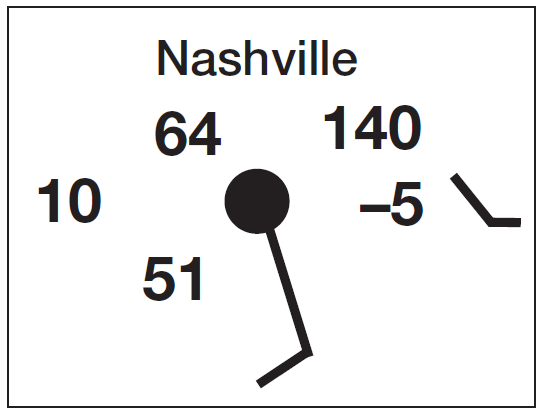The diagnosis of heatstroke is usually made when a patient has a high core body temperature and:
A) an altered mental status.
B) an absence of sweating.
C) a history of heat exposure.
D) a heart rate above 140 beats/min.
Answer: A) an altered mental status.
You might also like to view...
Which of the following statements regarding migration and settlement of African Americans in the United States is most accurate?
A) In 1900, about half of African Americans lived in the South; today that figure remains the same. B) In 1900, more than 70% of African Americans lived in the South; today about one-third of them live there. C) In 1900, more than 90% of African Americans lived in the South; today a little more than half of them live there. D) In 1900, about half of African Americans lived in the South; today about 90% of them live there. E) In 1900, more than 90% of African Americans lived in the South; today that figure remains the same.
Describe the following weather conditions at 7:00 a.m. EST on November 9, 2011, in Nashville, Tennessee (36° N, 87° W; an enlarged copy of the station model is shown here).
The question is based on the surface weather map for November 9, 2011. This day was chosen because of the weather conditions present. There is a well-developed midlatitude cyclone centered near Chicago, with a cold front extending to the southwest and a warm front extending to the east. Several areas of high pressure are found along the east coast and in the west.

(a) Temperature: __________ °F
(b) Dew point: __________ °F
(c) Wind speed: __________ knots
(d) Wind direction: ________________
(e) Pressure: __________ mb
(f) Pressure change over last 3 hours: __________ mb
(g) What explains this change in pressure?
(h) What explains the wind direction?
Describe the airflow around a low-pressure center (cyclone) and a high-pressure center (anticyclone) and the weather associated with each
What will be an ideal response?
Which is TRUE of air flowing into low pressure center?
A) Air converges and descends. B) Air diverges and descends. C) Air converges and ascends. D) Air diverges and ascends.